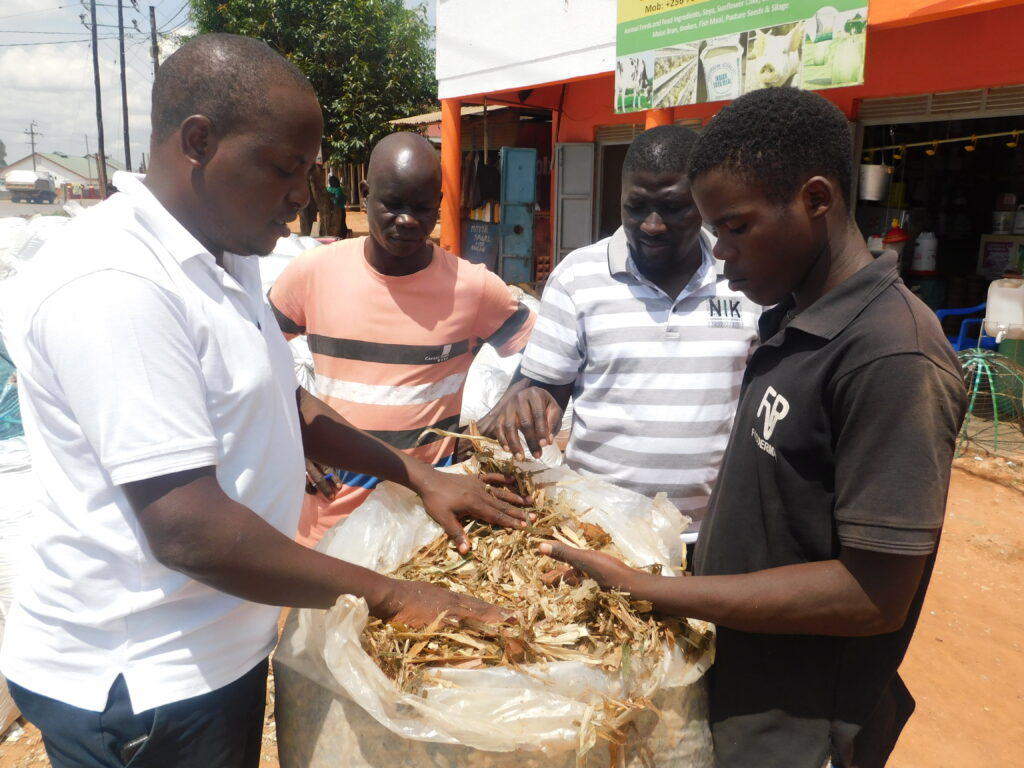By Joshua Kato
When he was born, his parents called him Allan Iga! But after his studies and acquiring a Bachelor of Science in Agriculture Extension, he started doing work that gave him a new name-Mr Fodderman!
This was obvious because Iga chose to solve one big challenge that was affecting cattle keepers-pasture and fodder. At his office in Matugga, Fodder-man, there is a ‘beehive’ of pastures!

“I worked for several organisations until I decided to start my own company,” he says. He grows pastures including napier, maize, brachiria, chrolis gayana and processes it into silage or hay for farmers for sell, he also processes molasses for farmers. He says that he realized that there was a scarcity of cattle feeds in the country and he came out to solve this challenge. “There are many farmers who want to keep cattle but do not have space to grow pastures. So I decided to help these people get feeds for their animals,” he says. To improve his knowledge base, he visited Kenya in order to benchmark on pasture growing and generally livestock nutrition.
“I grow pastures on over 10acres, but I also help farmers process their own pastures into hay or silage,” he says. In addition to growing pastures, Iga also acquired equipment that is used to process the grasses. These include silage choppers and hay balers for example.
Iga also works with Valeria Farm, a fairly modern dairy farm in Mukono. “I advise farmers in nutrition of their cattle,” he says.
Napier grass
Iga grows the new high yielding Pakchong variety at the farm. In Uganda, napier, or elephant grass, has been crossbred with other crops to improve growth rate as well as protein and sugar content. He says that two notable cultivars are Sweet Napier, Napier x sugar Cane and Pak Chong, Napier x Millet. These are the varieties that this farm is growing and multiplying. The latter has higher protein content and the former higher sugar content than native Napier. Both have improved Dry Matter (DM) yield. The higher the Dry Matter in feeds the more a cow benefits because it fills the stomach faster and gives more energy.
Iga explains that yields of Pak Chong on good soils in Thailand reach 600 tons per acre annually.
“It grows faster than ordinary napier. We also sell pastures to farmers who cannot grow enough for their animals,” he says.
Chrolis Gayana
Iga also grows and promotes chloris gayana, also known as Rhodes grass. This is a perennial or annual tropical grass. It is used in permanent pasture or as a short to medium term pasture ley to restore soil structure, improve organic matter levels, and reduce nematode attacks. He says that the grass makes good hay if cut at or just before very early flowering.
He says that the grass requires rainfall of 500-1,500 mm per year with fertile soils and a well-prepared seedbed is required for; creating a favourable environment in which seeds will germinate, emerge and grow. If vegetative material is being used, it is good for starting new roots and shoots.
Iga proposes that if the land has some kind of a slope, work across the slope. Avoid an unnecessarily fine seedbed, which may render the soil highly susceptible to water and wind erosion. If the soils are shallow and likely to be highly susceptible to erosion, leave strips of undisturbed soil across the slope to reduce the potential for soil erosion.
“It takes just about three months to mature,” he says.





